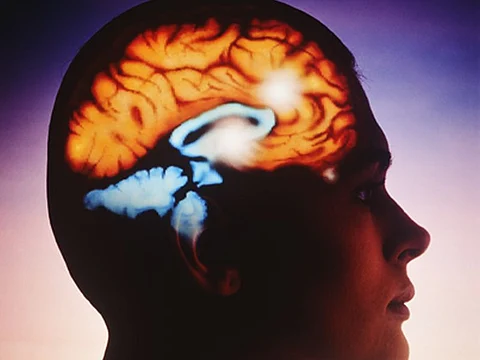TUESDAY, June 12, 2018 (HealthDay News) -- White matter hyperintense lesions (WMHs) in patients with reversible cerebral vasoconstriction syndrome (RCVS) change over time in a manner that parallels disease severity, according to a study published online June 4 in JAMA Neurology.
Shih-Pin Chen, M.D., Ph.D., from Taipei Veterans General Hospital in Taiwan, and colleagues prospectively recruited patients with RCVS (January 2010 through December 2012) from the headache center or emergency department in order to investigate the spatiotemporal distribution and pathomechanisms of WMHs. Sixty-five patients underwent serial isotropic 3-dimension fluid-attenuated inversion recovery sequence imaging (162 images) as well as transcranial and extracranial color-coded sonography.
The researchers found that the total mean WMH load peaked at 3.2 cm3 in the third week post-onset and fell to 0.8 cm3 in the fourth week. Frontal and periventricular locations predominated among white matter hyperintensities. There were strong correlations between white matter hyperintensity load and Lindegaard index during the second week of the disease course, the pulsatility index, and resistance index of the internal carotid artery.
"White matter hyperintensities in RCVS may be attributed, at least partially, to regional hypoperfusion and impaired dampening capacity to central pulsatile flow," the authors write.
Several authors disclosed financial ties to the pharmaceutical industry.
Abstract/Full Text (subscription or payment may be required)


